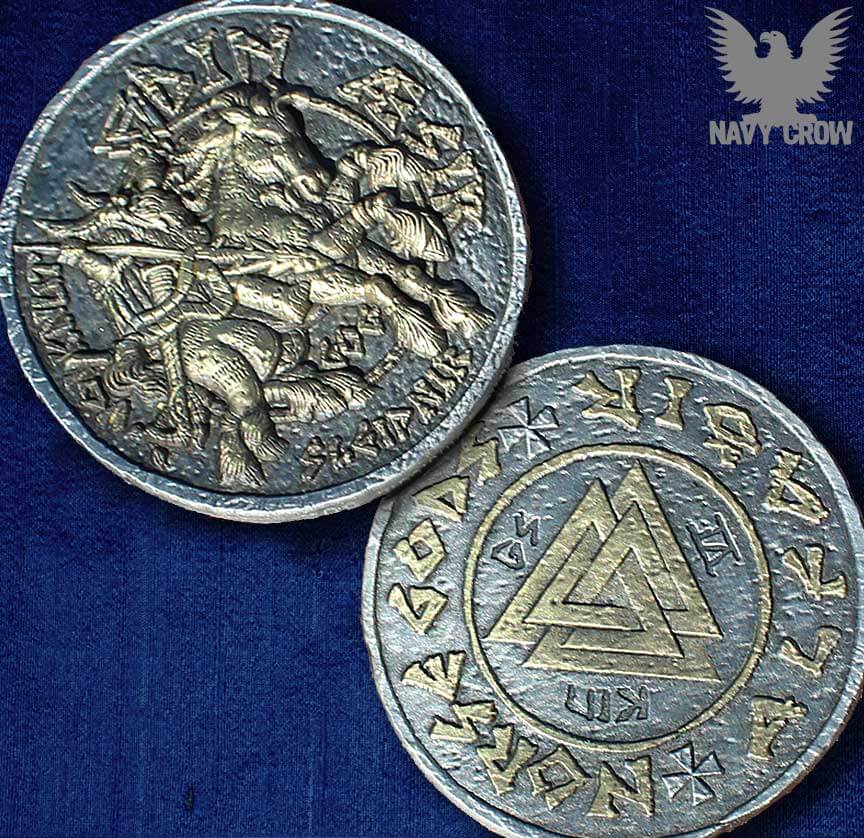Viking Coins
Silbury Coins specialise in this unique area or British history. Our range of Saxon and Viking coins for sale span a period of almost 400 years. Our coins, available to purchase today range from the Early Saxon, the Middle Saxon and Late Saxon periods. You will see a good selection of Sceats (sometimes called Sceatta), Thrymsa’s (also called Shillings), broad flan pennies and occasionally cut coins in addition to a small range of Viking coinage. All of the coins you see listed are available to purchase online. Please take a moment to browse our Saxon and Viking coin collection using the options below. We are interested in buying Anglo Saxon and Viking coins, please get in touch if you wish to sell something.
Each of these Norse coins is made from antiqued or gold-plated pewter showing fantastic detail based on actual historical coins like the Viking penny and cnut. These Viking coins are somewhat rough in appearance in order to provide an aged look. These Nordic coins make fantastic acquisitions, as they can be used as gaming coins, collectible currency, Renaissance fair money, or educational tools. A number of our coin packs share historical information about the coin and the period in which it. Among the coins, around 70% were minted in the Viking kingdoms on the British Isles, 15% from Anglo-Saxon kingdoms on the British Isles and 15% were from foreign sources. These included Byzantine, Islamic, Papal and Frankish coins as well as coins minted in Scandinavia. The Ribble Valley was an important route between the York and the Irish Sea. Viking coinage was used during the Viking Age of northern Europe.Prior to the usage and minting of coins, the Viking economy was predominantly a bullion economy, where the weight and size of a particular metal is used as a method of evaluating value, as opposed to the value being determined by the specific type of coin.
Viking Coins In Museums

Viking Coins Images
To the right you will see a map showing the British Isles during the mid Saxon period, it was split in to Kingdoms, 5 of which produced coins. These were Northumbria, Mercia, East Anglia, Kent and Wessex. Offa (king of Mercia) built a Dyke stretching from the Severn estuary to the north coast to keep the Welsh out of his kingdom. The river Thames divided Mercia & Wessex with London being occupied by both tribes at some point, likely peacefully for a time as we see joint issues of these two tribes. The Vikings successfully occupied Northumbria and East Anglia, centred in York, this must have created much unrest, many battles were fought and bribes paid.
Viking Coins For Sale
Eventually Edward The Elder, the last King of Wessex, and his son, Aethelstan united the kingdoms and a new ‘unified’ England was formed, which we still see in place today. Aethelstan created Burghs, each of which had a church and mint.